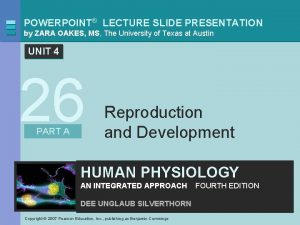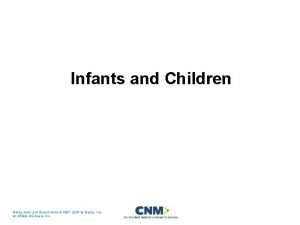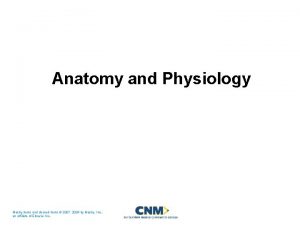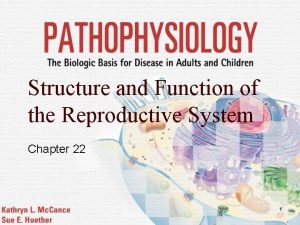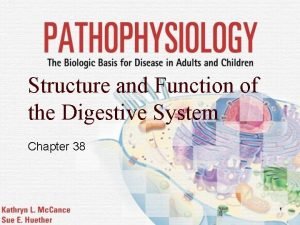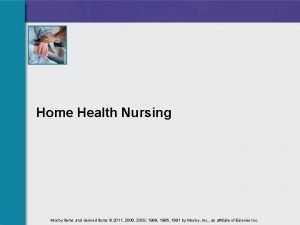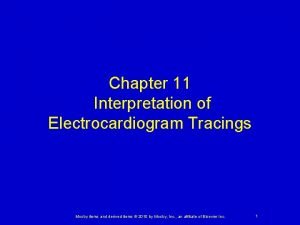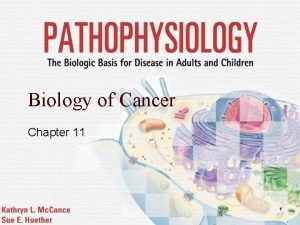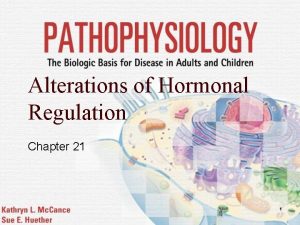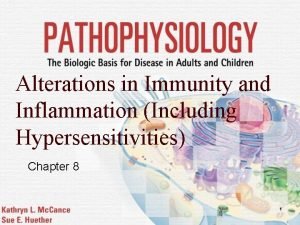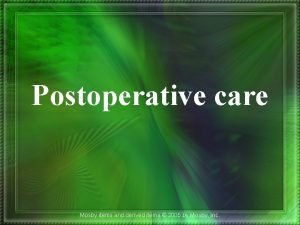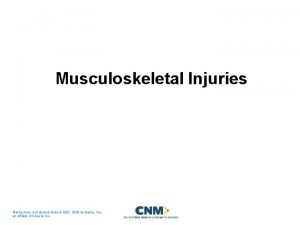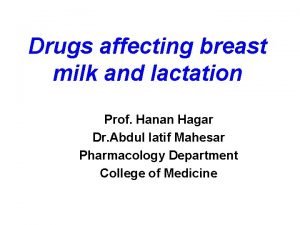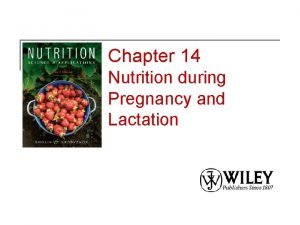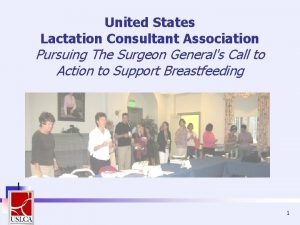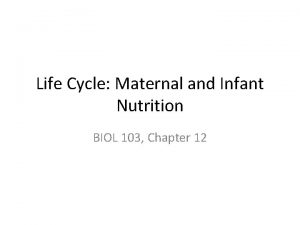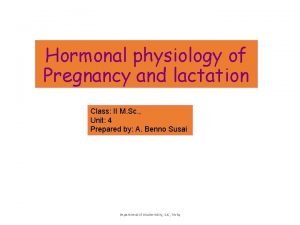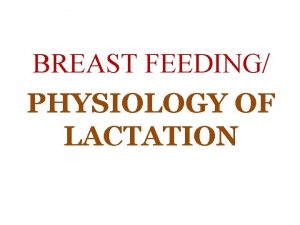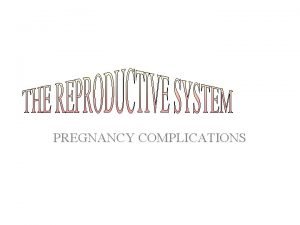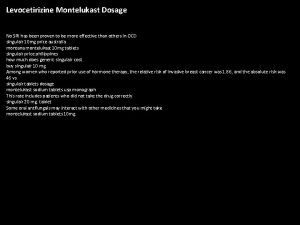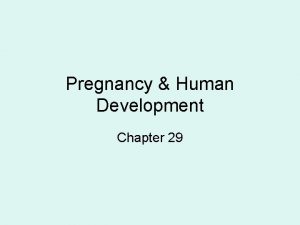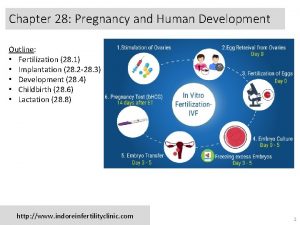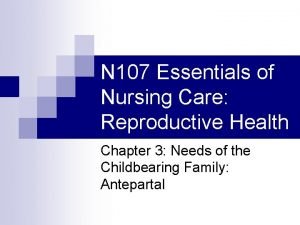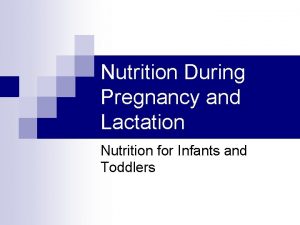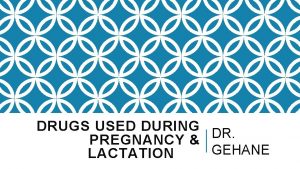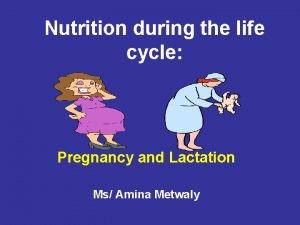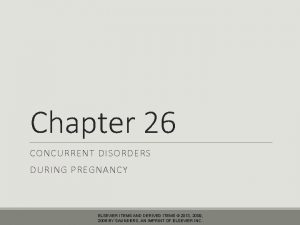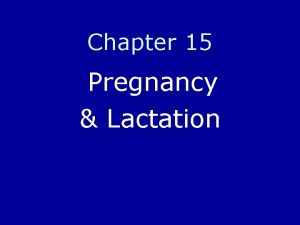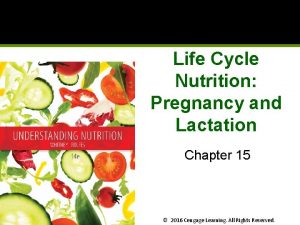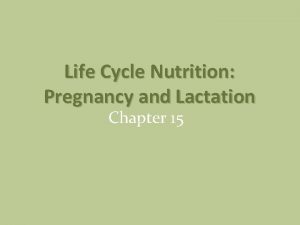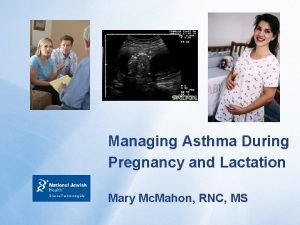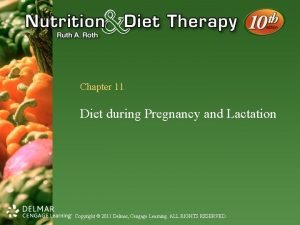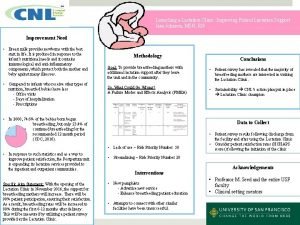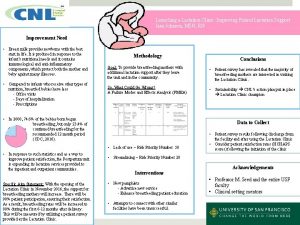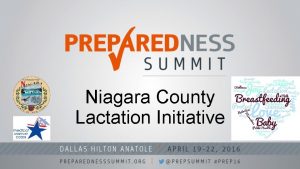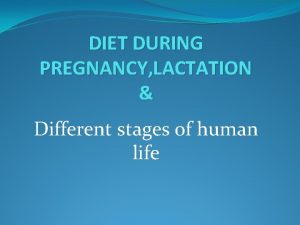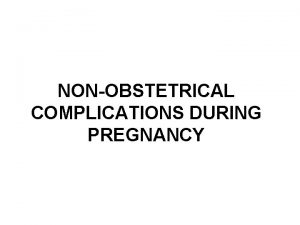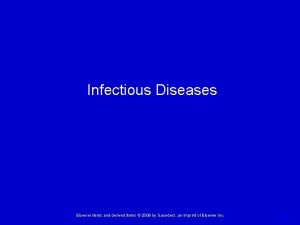Nutrition during Pregnancy and Lactation Elsevier items and










































- Slides: 42

Nutrition during Pregnancy and Lactation Elsevier items and derived items © 2008, 2004 by Saunders, an imprint of Elsevier Inc.

Factors Affecting Conception n Extreme underweight or overweight n Nutritional status n Environmental toxins n Elevated plasma homocysteine and deficiency of vitamin B 12 n Excessive caffeine intake Elsevier items and derived items © 2008, 2004 by Saunders, an imprint of Elsevier Inc.

Practices incompatible with pregnancy n. Smoking n. Caffeine n. Illicit drugs n. Alcohol (causes Fetal Alcohol Syndrome) n. Nutrient megadoses Elsevier items and derived items © 2008, 2004 by Saunders, an imprint of Elsevier Inc.

Distribution of Weight Gain During Pregnancy Elsevier items and derived items © 2008, 2004 by Saunders, an imprint of Elsevier Inc.

Recommended Weight Gain During Pregnancy n Normal weight women n Underweight women n Overweight women n Teenagers Elsevier items and derived items © 2008, 2004 by Saunders, an imprint of Elsevier Inc. 11 -16 kg 13 -18 kg 7 -11 kg 16 -18 kg

Pounds Gained During Pregnancy Females who are of normal weight before their pregnancy should aim for a weight gain in the B to C range (25 to 35 lb) during the pregnancy. Underweight females should gain in the A to B range (28 to 40 lb). Females who are over weight before pregnancy should gain in the D range (15 to 25 lb). Elsevier items and derived items © 2008, 2004 by Saunders, an imprint of Elsevier Inc.

Factors Affecting Pregnancy Outcome n Historical perspective n Perinatal mortality and birth weight n Maternal size n Maternal weight gain during pregnancy n Obesity n Adolescence n Multiple births Elsevier items and derived items © 2008, 2004 by Saunders, an imprint of Elsevier Inc.

Nutritional Risk Factors in Pregnancy n Risk Factors presented at the onset of pregnancy *Age 15 years or younger 35 years or older *Frequent pregnancies: three or more during a 2 year period *Poor obstetric history or poor fetal performance *Poverty *Bizarre or faddist food habits *Abuse of nicotine, alcohol, or drugs *Therapeutic diet required for a chronic disorder *Weight: less than 85% of standard weight more than 120% of standard weight Elsevier items and derived items © 2008, 2004 by Saunders, an imprint of Elsevier Inc.

Nutritional Risk Factors in Pregnancy cont’d: n Risk factors occurring during pregnancy *Low hemoglobin and/or hematocrit Hemoglobin less than 12. 0 gm Hematocrit less than 35. 0 mg/dl *Inadequate weight gain Any weight loss Weight gain of less than 1 kg per month after the first trimester *Excessive weight gain: grater than 1 kg per week after the first trimester Elsevier items and derived items © 2008, 2004 by Saunders, an imprint of Elsevier Inc.

Risk Factors for Pregnant Teens n Maternal age, especially <16 years old n Pregnancy less than 2 years after onset of menarche n Poor nutrition, low prepregnancy weight, poor weight gain n Infection or sexually transmitted disease n Preexisting anemia n Substance abuse: smoking, drinking, and drugs n Poverty; lack of social support or education n Rapid repeat pregnancies n Lack of access to age-appropriate prenatal care n Late entry into health system Elsevier items and derived items © 2008, 2004 by Saunders, an imprint of Elsevier Inc. n Unmarried status

Nutritional Supplementation During Pregnancy n Special Supplemental Nutrition Program for Women, Infants and Children (WIC) n Supplements for high-risk pregnancies n Poor understanding of dietary adequacy n Prenatal supplements n Folate and iron Elsevier items and derived items © 2008, 2004 by Saunders, an imprint of Elsevier Inc.

Physiologic Changes of Pregnancy n Blood volume and composition – Blood volume increase – Red cell volume increase – Nutrient concentration changes n Cardiovascular and pulmonary function – – – Increased cardiac output Increased pulse rate Cardiac hypertrophy Decreased blood pressure Increased oxygen requirements Enhanced efficiency with gas exchange Elsevier items and derived items © 2008, 2004 by Saunders, an imprint of Elsevier Inc.

Physiologic Changes of Pregnancy– cont’d n Gastrointestinal function – – Nausea and vomiting Anorexia Constipation Heartburn n Renal function – Higher glomerular filtration rate – Increased nutrient excretion – Leg and ankle edema ■ Placenta – Surface size affects infant nutriture and birth weight Elsevier items and derived items © 2008, 2004 by Saunders, an imprint of Elsevier Inc.

Effects of nutrient deficiencies on pregnancy outcome n Energy Low infant birthweight n Folate Miscarriage and NTD (spina bifida) n Vitamin A Congenital malformations n Vitamin D Low infant birthweight n Iron Stillbirth, premature birth, and LBW n Iodine Cretinism (varying degree of mental and physical retardation in the infant) n Zinc Congenital malformations Elsevier items and derived items © 2008, 2004 by Saunders, an imprint of Elsevier Inc.

Energy Needs During Pregnancy n Metabolism increases 15% n DRIs add 340 to 360 kcal/day during the second trimester and another 112 kcal/day in the third trimester n Effects of exercise n Consequences of energy restriction Elsevier items and derived items © 2008, 2004 by Saunders, an imprint of Elsevier Inc.

Key Macronutrients in Pregnancy n Protein n Carbohydrate n Fiber n Lipids Elsevier items and derived items © 2008, 2004 by Saunders, an imprint of Elsevier Inc.

Key Vitamins in Pregnancy n Folic acid: prevention of NTDs (Spina bifida) n Choline n Vitamin B 6 n Ascorbic acid n Vitamins A, D, E, and K Elsevier items and derived items © 2008, 2004 by Saunders, an imprint of Elsevier Inc.

Key Minerals in Pregnancy n Calcium n Sodium n Phosphorus n Magnesium n Iron n Fluoride n Zinc n Iodine n Copper Elsevier items and derived items © 2008, 2004 by Saunders, an imprint of Elsevier Inc.

Daily Food Guide for Females Minimum Number of Servings Food Group Nonpregnant 11 to 24 -Year-Olds Nonpregnant 25 - to 50 -Year-Olds Pregnant or Lactating 11 to 50 -Year-Olds Protein, foods 5* 5* 7† Milk products 3 2 3 Breads, grains 7 6 7 Whole-grain 4 4 4 Enriched 3 3 3 Fruits, vegetables 5 5 5 Vitamin C rich 1 1 1 b-carotene rich 1 1 1 Folate rich 1 1 1 Other 2 2 2 3 3 3 Unsaturated fats Modified from Nutrition during pregnancy and the postpartum period: a manual for health care professionals, 1990, California Department of Health Services, Maternal Child Health Branch. *Equivalent in protein to 5 oz of animal protein; at least three servings per week should be from the vegetable proteins. †Equivalent in protein to 7 oz of animal protein; at least one of these servings should be a vegetable protein. Elsevier items and derived items © 2008, 2004 by Saunders, an imprint of Elsevier Inc.

Recommended Food Intake During Pregnancy n Calcium – Dairy products – Supplements n Fluids – 8 to 10 glasses daily Elsevier items and derived items © 2008, 2004 by Saunders, an imprint of Elsevier Inc.

Nutritional Care During Pregnancy Summary of Nutritional Care During Pregnancy 1. Energy intake to meet nutritional needs and allow for about a 0. 4 -kg (14 -oz) weight gain per week during the last 30 weeks of pregnancy 2. Protein intake to meet nutritional needs, about an additional 25 g/day; additional 25 g/day/fetus if more than one fetus 3. Sodium intake that is not excessive but is no less than 2 -3 g/day 4. Mineral and vitamin intakes to meet the recommended daily allowances (folic acid and possibly iron supplementation is required) 5. Alcohol omitted 6. Caffeine in moderation: less than 200 mg/day—equivalent of 2 cups of coffee Elsevier items and derived items © 2008, 2004 by Saunders, an imprint of Elsevier Inc.

Non-Nutrient Effects/Issues n Alcohol (causes Fetal Alcohol Syndrome) n Caffeine n Artificial sweeteners n Contaminants: exposure to methyl mercury caused Minamata Syndrome which happened to villagers of Minamata in 1953 in southern Japan who ate contaminated fish with methyl mercury. This syndrome caused death of one third of affected villagers. Mercury was transported across the placenta and also appeared in breast milk of mothers consuming contaminated fish. Many infants and children suffered permanent brain Elsevier items and derived items © 2008, 2004 by Saunders, an imprint of Elsevier Inc.

Non-Nutrient Effects/Issues n Polychlorinated biphenyls (PCBs), used as plasticizers and heat exchange fluid. In Kyushu, Japan in 1968 a number of pregnant and lactating women ingested cooking oil contaminated with PCBs. As a result, they had small-for gestationalage infants with dark skin, eye defects, and other abnormalities. n Listeria monocytogenes n Beliefs, aversions, avoidances, cravings. A food craving is an intense desire to consume a specific food such as chocolate. n Pica: Pica is characterized by an appetite for substances that are largely non-nutritive, such as paper, clay, metal, chalk, soil, glass, or sand. Elsevier items and derived items © 2008, 2004 by Saunders, an imprint of Elsevier Inc.

Fetal Alcohol Effects From Streissguth AP et al: Teratogenic effects of alcohol in humans and laboratory animals, Science 209: 353, 1980. Elsevier items and derived items © 2008, 2004 by Saunders, an imprint of Elsevier Inc.

Transfer of Substances Across the Placental Membrane Elsevier items and derived items © 2008, 2004 by Saunders, an imprint of Elsevier Inc.

Diet-Related Complications of Pregnancy n Nausea and vomiting – Usually during first trimester n Heartburn – Common during later pregnancy n Constipation and hemorrhoids – Common during latter stages n Edema and leg cramps – Usually during third trimester Elsevier items and derived items © 2008, 2004 by Saunders, an imprint of Elsevier Inc.

Higher-Risk Complications of Pregnancy n Hyperemesis gravidarum: Hyperemesis gravidarum is extreme, persistent nausea and vomiting during pregnancy that can lead to dehydration. Nearly all women have some nausea or vomiting (morning sickness), particularly during the first 3 months of pregnancy. – Incidence: 2% of obstetric population – Management: rest and rehydration n Pregnancy and preexisting diabetes mellitus Elsevier items and derived items © 2008, 2004 by Saunders, an imprint of Elsevier Inc.

Higher-Risk Complications of Pregnancy–cont’d n Gestational diabetes – Incidence: 5% to 10% of obstetric population – Diagnosis – Management n Pregnancy-induced hypertension (PIH) – – – Incidence: 5% to 8% of obstetric population Preeclampsia Eclampsia Diagnosis Management Elsevier items and derived items © 2008, 2004 by Saunders, an imprint of Elsevier Inc.

Risk factors associated with gestational diabetes n Family diabetes n Previously unexplained stillbirths n Large babies weighing 4 kg or more n Habitual abortions n Birth of babies with multiple congenital defects n Excessive obesity Elsevier items and derived items © 2008, 2004 by Saunders, an imprint of Elsevier Inc.

Lactation Overview n Physiology of lactation n Nutritional requirements of lactation Elsevier items and derived items © 2008, 2004 by Saunders, an imprint of Elsevier Inc.

Benefits of Breast-Feeding Infant Decreases incidence and/or severity of infectious diseases Bacterial meningitis Bacteremia Diarrhea Respiratory tract infection Necrotizing enterocolitis Otitis media Urinary tract infection Late-onset sepsis in preterm infants Elsevier items and derived items © 2008, 2004 by Saunders, an imprint of Elsevier Inc.

Benefits of Breast-Feeding – cont. Decreases rates of: Sudden infant death syndrome Types 1 and 2 diabetes Lymphoma Leukemia Hodgkin’s disease Overweight and obesity Hypercholesterolemia Food allergies Asthma Neurodevelopment Enhances performance on cognitive development tests Provides analgesia during painful procedures (heel stick for newborns) Promotes mother-child bonding Elsevier items and derived items © 2008, 2004 by Saunders, an imprint of Elsevier Inc.

Benefits of Breast-Feeding – cont. Mother Decreases postpartum bleeding More rapid uterine involution Decreases menstrual blood loss Increased child spacing Earlier return to prepregnant weight Decreases risk of breast and ovarian cancer Possible decreased risk of postmenopausal hip fracture and osteoporosis Adapted from American Academy of Pediatrics: Breastfeeding and the use of human milk, Pediatrics, 115: 496, 2005. Elsevier items and derived items © 2008, 2004 by Saunders, an imprint of Elsevier Inc.

The Mammary Gland Elsevier items and derived items © 2008, 2004 by Saunders, an imprint of Elsevier Inc.

Physiology of Milk Production Elsevier items and derived items © 2008, 2004 by Saunders, an imprint of Elsevier Inc.

Physiology of lactation n Prolactin: a hormone secreted from the anterior pituitary gland that acts on mammary glands to initiate and sustain milk production. n Oxytocin: a hormone secreted from the posterior pituitary gland that stimulates the uterus to contract and the mammary glands to eject milk. Elsevier items and derived items © 2008, 2004 by Saunders, an imprint of Elsevier Inc.

Prolactin and Oxytocin activity n An infant suckling at the breast stimulates the pituitary to release prolactin and oxytocin. Each of these hormones acts on the mammary glands. n Prolactin encourages milk production n Oxytocin stimulates milk ejection. n Each of the hormones also acts on the reproductive organs: Prolactin inhibits ovulation. Oxytocin promotes uterus contractions. Elsevier items and derived items © 2008, 2004 by Saunders, an imprint of Elsevier Inc.

Breast-Feeding: Special Nutrient Needs n Energy n Protein n Carbohydrates n Lipids n Vitamins n Minerals Elsevier items and derived items © 2008, 2004 by Saunders, an imprint of Elsevier Inc.

Breast-Feeding an Infant n Preparation n Technique n Duration of breast-feeding n Exercise and breast-feeding n Transfer of drugs into human milk n Failure to thrive in the breast-fed infant n Other problems Elsevier items and derived items © 2008, 2004 by Saunders, an imprint of Elsevier Inc.

Breast-Feeding Potential Problems Elsevier items and derived items © 2008, 2004 by Saunders, an imprint of Elsevier Inc.

Breast-Feeding Problems and Solutions Management of Breast-Feeding Problems Problem Approaches to Management Retracted nipple(s) Before feeding the infant, roll the nipple gently between the fingers until erect. Baby’s mouth not open wide enough Before feeding, depress the infant’s lower jaw with one finger as the nipple is guided into the mouth. Baby sucks poorly Stimulate sucking motions by pressing upward under the baby’s chin. Expression of colostrums often occurs, and the taste may stimulate sucking. Baby demonstrates rooting but does not Interrupt the feeding, comfort the infant; the mother should grasp the nipple; eventually cries in take time to relax before trying again. frustration Baby falls asleep while nursing If the infant falls asleep early in the feeding, the mother should awaken the infant by holding him or her upright, rubbing his or her back, talking to him or her, or providing similar quiet stimuli; another effort at feeding can then be made. If the baby falls asleep again, the feeding should be postponed. Elsevier items and derived items © 2008, 2004 by Saunders, an imprint of Elsevier Inc.

Focal Points n The Dietary Guidelines for Americans (see Chapter 12) provide an appropriate base for counseling women of reproductive age, but there is also need for individualized counseling. n Whether defined problems are attributable to lack of resources, lack of nutrition knowledge, self-imposed dietary manipulations, genetic individuality, or a combination of these factors, solutions to defined problems during pregnancy and lactation can usually be found. n A woman of reproductive age needs to know she gets but one chance to create the best baby she can; optimizing nutrition and her environment are critical ingredients. n Breastfeeding remains the best source of nutrition for newborns, and new mothers need support to breastfeed as long as possible up to 12 months. Elsevier items and derived items © 2008, 2004 by Saunders, an imprint of Elsevier Inc.
 Leydig cells histology
Leydig cells histology Molar pregnancy symptoms
Molar pregnancy symptoms Mosby items and derived items
Mosby items and derived items Mosby items and derived items
Mosby items and derived items Mosby items and derived items
Mosby items and derived items Mosby items and derived items
Mosby items and derived items Caudal region of the body
Caudal region of the body Mosby items and derived items
Mosby items and derived items Mosby items and derived items
Mosby items and derived items Mosby items and derived items
Mosby items and derived items Mosby items and derived items
Mosby items and derived items Mosby items and derived items
Mosby items and derived items Absorptive atelectasis
Absorptive atelectasis Absorption atelectasis
Absorption atelectasis Mosby items and derived items
Mosby items and derived items Mosby items and derived items
Mosby items and derived items Mosby items and derived items
Mosby items and derived items Mosby items and derived items
Mosby items and derived items Mosby items and derived items
Mosby items and derived items Mosby items and derived items
Mosby items and derived items Mosby items and derived items
Mosby items and derived items Mosby items and derived items
Mosby items and derived items Mosby items and derived items
Mosby items and derived items Mosby items and derived items
Mosby items and derived items Mosby items and derived items
Mosby items and derived items Mosby items and derived items
Mosby items and derived items Mosby items and derived items
Mosby items and derived items Mosby items and derived items
Mosby items and derived items Mosby items and derived items
Mosby items and derived items Drugs in lactation
Drugs in lactation Lactation physiology
Lactation physiology United states lactation consultant association
United states lactation consultant association Ps12q
Ps12q Lactation
Lactation Lactation
Lactation Pictures of pyometra in dogs
Pictures of pyometra in dogs Levocetirizine montelukast
Levocetirizine montelukast Teat meatus
Teat meatus Lactation tetany
Lactation tetany Stages of implantation
Stages of implantation Hormones during pregnancy
Hormones during pregnancy Dexamethasone action in pregnancy
Dexamethasone action in pregnancy Role of nurse in reproductive health ppt
Role of nurse in reproductive health ppt
